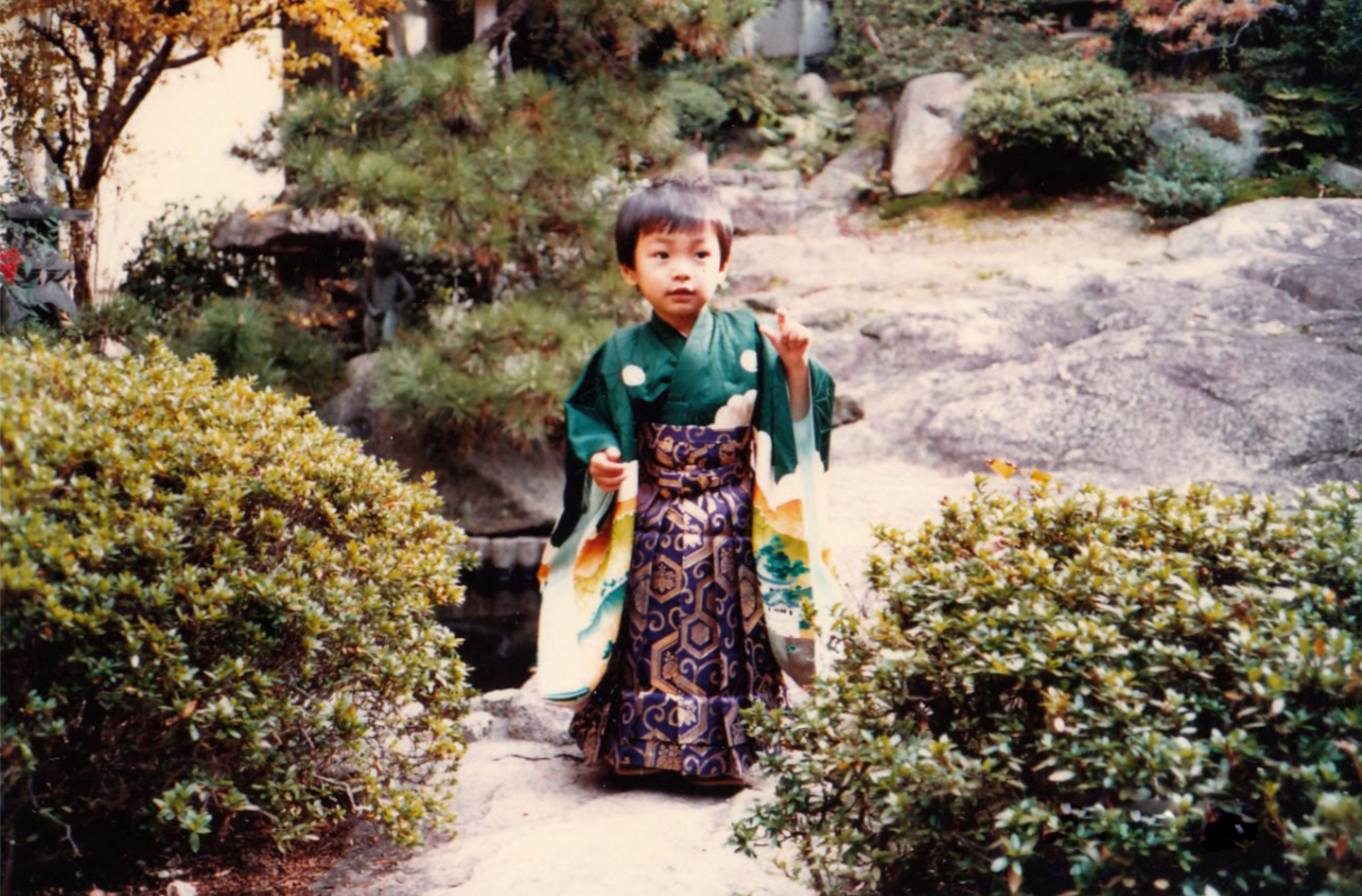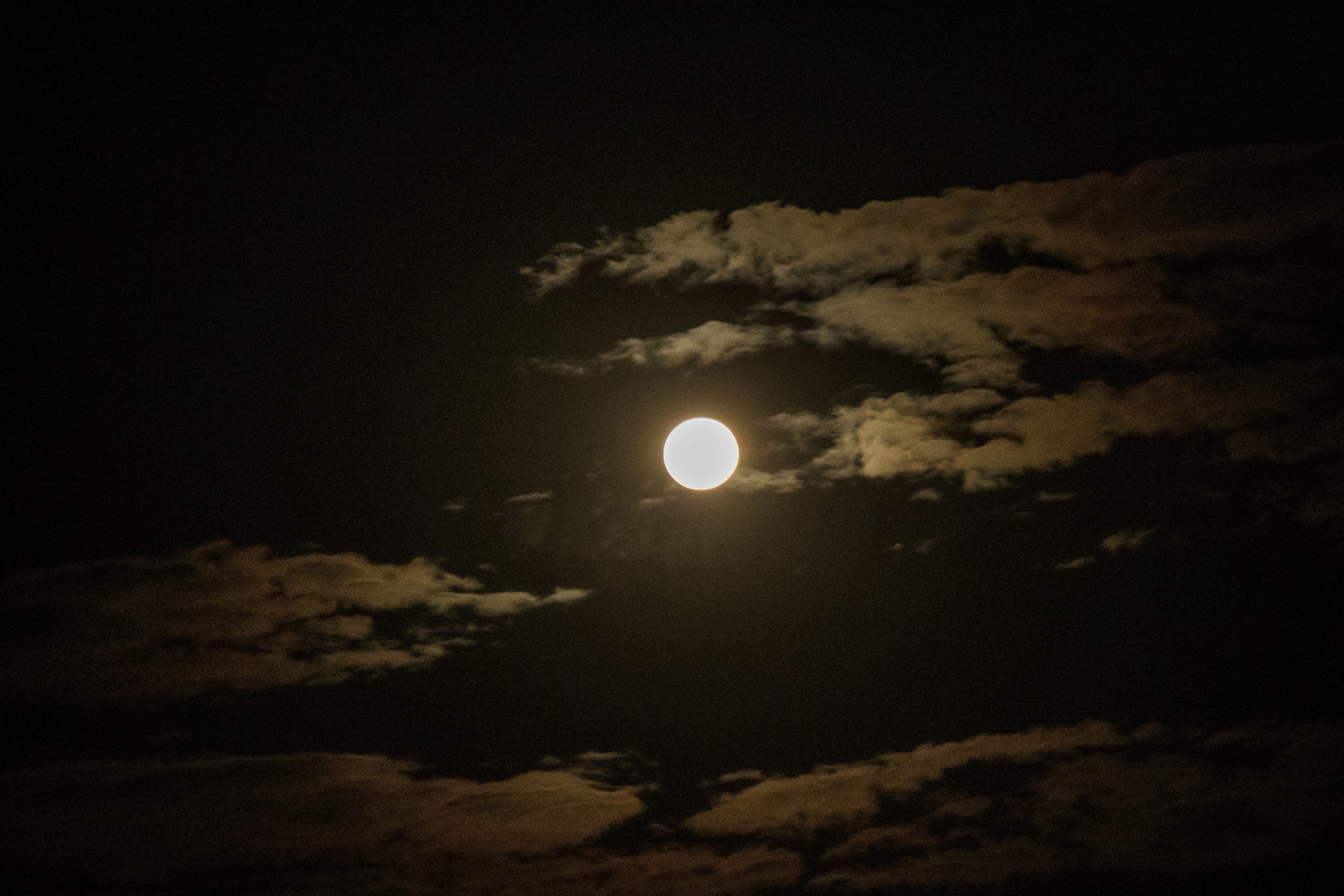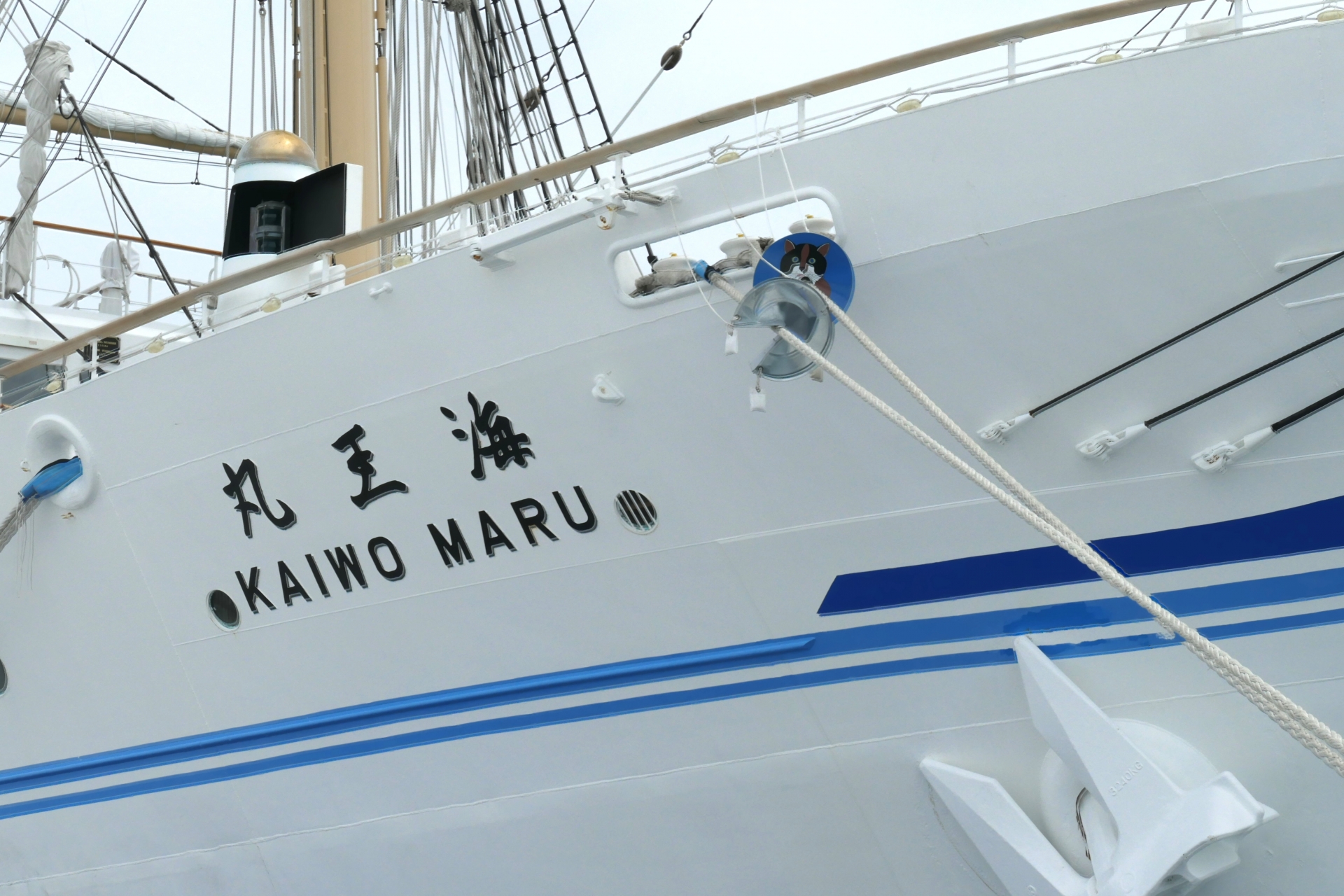Why do Japanese ships have “maru” affixed to their names? (5)
Modern Japanese Ship Names and “Maru”
日本語は英語の下にございます。/ Japanese translation is below the English text.
This is the last of the five posts on: Why do Japanese ships have “maru” affixed to their names?:
=> (1) Japanese Ship Names Often End With “Maru”
=> (2) “Maru” is a Symbol of Perfection
=> (3) “Maru” in the Names of Other Things
=> (4) How to Fend Off Your Baby From Demons
(5) Modern Japanese Ship Names and “Maru”
MODERN JAPANESE SHIP NAMES AND "MARU" Contents 1) “Maru” is no longer required in ship names 2) The official opinion 3) Modern ship names 4) “Maru” and the type of ships 5) Will “maru” stay with Japanese ship names?
1) “Maru” is no longer required in ship names
Today, the “maru” in ships’ names is so common that we just take it as a long-standing custom, without giving it much thought about its origin.
In 1900, the Japanese Government gave the custom a legal basis by making an instruction requiring that a Japanese ship be named with “maru”.
By doing this, it aimed to distinguish Japanese ships as more foreign ships sailed into Japanese territory as well as more Japanese ships sailed on the open sea.
One hundred years later, the law was no longer in effect. Since 2001, shipowners have been able to name their ships as they want.
2) The official opinion
Before we put together this post, we searched for the official opinion on the etymology of the “maru”, by reading various websites of such organizations as The Ministry of Land, Infrastructure, Transport and Tourism, The Japanese Shipowners’ Association, Museum of Maritime Science, and a travel agent promoting expensive world cruise tours, among others.
They listed some of the theories we mentioned in our other posts (Please see: => Maru is a Symbol of Perfection and => “Maru” in the Names of Other Things) and concluded that there is no generally accepted theory.
Interestingly, none mentions the theory of “maru” as a talisman to protect a precious property against demons (See: => How to Fend Off Demons From Your Baby). We think this opinion is most likely to be true, but it is introduced only by a few sites which are not related to the maritime transport business.
Japanese Shipowners’ Association commented in the past as follows:
“However, recently, there are more merchant ships which have a foreign or Japanese word for their name without “maru”. In fact, we don’t feel any inconvenience in not having “maru” in our ships’ names. It may be a natural course of history that “maru” will disappear as time passes.” (Japanese Shipowners’ Association, 2018*)
There was some dryness in their tone. Do they not miss “maru”, a long tradition of Japan?
It makes us wonder if they actually believe in the “evil warding-off” theory and they are embarrassed to admit that it is just a superstition, let alone that “maru” originally meant dung.
*Note: Currently, in this web page, they only mention some other theories and say “maru” in ship names are no longer required.
3) Modern ship names
After 2001, ”maru” is no longer a requirement; shipowners can name their ships what they want. Then, do fewer ships have names with “maru” today?
We found a list of registered Japanese ships with radio in 2005, and counted the number of ships with “maru” and without “maru” in different categories, trying to see how many ships still bear “maru”. Below is the summary of the list:
Number and Percentage of “Maru Ships” to Total Boat Number, 2014
| Category | Boat Number in the Category | Percentage to Total Boat Number | Number of “Maru” Ships” in the Category | Percentage to Boat Number in the Category |
|---|---|---|---|---|
| Fishing | 9,956 | 60% | 9,493 | 95% |
| Misc vessels | 2,756 | 17% | 1,735 | 63% |
| Cargo Boats | 1,780 | 11% | 1,185 | 67% |
| Oil tankers | 1,002 | 6% | 817 | 82% |
| Passenger boats | 577 | 3% | 205 | 36% |
| Small boats/pleasure boats | 295 | 2% | 112 | 38% |
| Passenger & cargo boats | 247 | 1% | 41 | 17% |
| Fishing cargo boats | 2 | 0% | 2 | 100% |
| Total | 16,615 | 100% | 13,591 | 82% |
(Based on the List of Ship Radio Stations, 2004, Ministry of Internal Affairs and Communications))
According to this, the majority of fishing boats, tankers, cargo and miscellaneous ships still have names with “maru”.
On the other hand, much smaller percentages of the Maru Ships are found in the categories of passenger ships, small boats and pleasure boats, and passenger/cargo boats.
4) “Maru” and the type of ships
We wonder if “maru” will stay with Japanese ship names. There is no telling just from this table, but the following is our impression and guesses about the future.
Fishery is an ancient profession. It seems that most fishing people and companies choose to honor the tradition and keep “maru”, whether they regard it as a talisman or not against the evil spirits. We may continue to see many fishing boats named with “maru”.
On the other hand, miscellaneous boats and cargo ships may have much smaller number of the Maru Ships in the future. This list was made only four years after the instruction was voided, and already a third of the ships bore a name without “maru”.
We can see a similar move with oil tankers; almost 20% of them already bore a name without “maru”. They may keep using the current name for an existing tanker but when they build a new one, they may name it without “maru”. Oil tankers’ duration of service is generally longer than fishing boats, so the change may take more time.
Compared with fishing boats, cargo ships, boats for miscellaneous uses and tankers are used for more “modern” businesses, and they may not really feel much need to keep the suffix which may make the name a little old-fashioned.
Probably for the same reason, and hoping to promote a more modern image to prospective customers or to look different from a traditional image, many owners of passenger boats, cargo/passenger boats and small boats and pleasure boats have already given their boats names without “maru”. To name a ship with “maru” is now a matter of taste, and the tendency for non-“maru” ships is likely to continue with these categories.
5) Will “maru” stay with Japanese ship names?
We also found another list, the more recent 2014 Japanese ships with radio. We wanted to compare it with the 2005 list above, but the image on the Internet was too blurry for counting and the list didn’t allow us to download except for page by page.
However, we did notice something in the 2014 list. The number of ships with radio was only 13,500 in 2014 while it was 16,615 in 2004, an almost 20% decrease in ten years.
Our guess is that, of the three thousand decreases, many were owned by retiring fishermen. Many fishing boats are very small and owned by an individual or a small family business. In an aging fishing society, the owners retire at a fast pace without successors.
So, in the long run, the rate of fishing boats to the total number of Japanese boats will probably be smaller, and so will the rate of Maru Ships in aggregate.
We will continue to see the changes with the “maru”.
[End of the English post]
なぜ日本の船名には「まる」がつくのか?(5)
現代日本の船名と「まる」
ここまでのお話はこちら:
=> (1) 「マル・シップ」~日本の船名に「まる」が多くついていること
=> (2) 「まる」は完全の象徴
=> (3) 他のものの名につく「まる」について
=> (4) 赤ちゃんが魔物にさらわれないようにする方法
もくじ 1) 自由裁量になった「まる」付け 2) 「まる」についての公式見解 3) 現代の船名 4)「まる」と船の種類 5)「まる」は今後も船名にとどまるか
1) 自由裁量になった「まる」付け
今日「まる」のついた船名は非常に多く、私たちは「まる」の起源など考えず、長年の慣習によるものにすぎないと考えがちです。
1900年に、明治政府は日本の船舶は名前に「まる」を付けなければいけないという訓令を出し、この慣習は法的義務にもなりました。
当時、日本領海に入る外国船が増え、日本の船舶も多く公海へ出て行くようになったという背景があり、政府はこれによって日本船と外国船との区別をつけようとしたのです。
しかし、2001年にこの訓令は無効になり、現在、船主は船名を自由に選ぶことができるようになりました。
2) 「まる」についての公式見解
この投稿の前に、私たちは船名の「まる」の起源について、国土交通省、日本船主協会、船の科学博物館、豪華なクルーズ・ツアーを販売している旅行代理店など、いろいろなサイトを読みました。そこでは、前述した諸説(こちらをご覧ください: =>「まる」は完全の象徴、=> 他のものにつく「まる」について)を紹介していましたが、どれも主流とはなっていないようです。
しかし、これらには魔除け説(こちらをご覧ください: =>赤ちゃんが魔物にさらわれないようにする方法)は載っていませんでした。
私たちが一番信じやすいと考えた魔除け説は、海上運送事業と関係のないサイトで紹介されているだけです。
2018年の日本船主協会のサイトには、このような文がありました。
でも、最近は片仮名や平仮名の丸なしの商船も多くなった。「丸」をつけなくても特に不自由はない。船名から丸の字が消えてゆくのも時代の流れなのかもしれない。(日本船主協会サイト、2018年*)
なんだか冷たい感じです。これを書いた人には、日本の長い伝統を誇る「まる」に愛着がなかったのでしょうか。
私たちの印象ですが、実際には、彼らもやはり「まるは魔除け」論を信じている。これがただの迷信で、しかも「まる」はくそ(糞)という意味だなどとは恥ずかしくて認めたくないのではないかという気がします。
*現在、このWEBページには、他のいくつかの説と、「丸」は現在つけなくても良くなったと書いてあるだけです。
3) 現代の船名
それでは、船主が好きな名前をつけられるようになった2001年以降、マル・シップすなわち「まる」付きの船は減ったでしょうか。
2004年の船舶局名録があったので、「まる」のある船とない船の数を種類別に数えてみました。
2014年の「マル・シップ」の数と、総船舶数に対する割合
| 種類 | 種類ごとの船舶数 | その種類がそう船舶数に占める割合 | その種類のマル・シップの数 | マル・シップがその種類の船舶数に占める割合 |
|---|---|---|---|---|
| 漁船 | 9,956 | 60% | 9,493 | 95% |
| その他の船舶 | 2,756 | 17% | 1,735 | 63% |
| 貨物船 | 1,780 | 11% | 1,185 | 67% |
| タンカー | 1,002 | 6% | 817 | 82% |
| 貨客船 | 577 | 3% | 205 | 36% |
| 小型船、レジャーボート | 295 | 2% | 112 | 38% |
| 貨物・貨客船 | 247 | 1% | 41 | 17% |
| 釣り貨物船 | 2 | 0% | 2 | 100% |
| 総数 | 16,615 | 100% | 13,591 | 82% |
(総務省2004年船舶局名録)
これによると、漁船の大多数には名前に「まる」がついています。
タンカー、貨物船や「その他」の船舶は過半数が「まる」付き。
一方、貨客船、小型船/レジャーボート、貨客・貨物船では「まる」なしの船が過半数です。
4)「まる」と船の種類
「まる」は、将来も日本の船の名前に残っていくでしょうか。この表だけではわかりませんが、一応考えてみました。
漁業は古くから続く職業ですし、これに携わる人々や会社は、伝統を大切にして「まる」を付けておいているようです。これが魔除けのお守りと考えられているかどうかはわかりませんが、今後も多くの漁船の名前には「まる」が付いたままかもしれません。
一方、「その他」の船や貨物船からは将来「マル・シップ」が減っていきそうです。このリストは、訓令改正からわずか4年後のものですが、すでに三分の一の船名には「まる」がなくなっているからです。
同様の動きがタンカーにもみられます。すでに20%が「まる」なしです。今あるタンカーには元の名前を使うとしても、新しく建造したものは「まる」のない名前になるかもしれません。タンカーの耐久年数は一般に漁船より長いので、変化にはより時間がかかるでしょう。
漁業に比べてこれらタンカー、貨物船、「その他」の船舶などは、より「近代的」な事業に使われるので、少し旧式に見える「まる」を付けておく必要性をあまり感じないのかもしれません。
おそらくはこれと同じ理由で、そしてより現代的なイメージを顧客に与えたり、従来とは違ったスタイルで船を持ちたいと考える船主は、貨客船、貨物・貨客船、小型船やレジャーボートに積極的に「まる」のない名前をつけているようです。「まる」を名前に使うかどうかは好みの問題ですが、「まる」なしの傾向は続きそうです。
5)「まる」は今後も船名にとどまるか
より新しい2014年の船舶局名録もインターネットで見つけたので、2005年のと比べてみようと思いましたが、船名を数えるには画像がぼやけすぎており、ダウンロードも一度に1ページ分しかできなかったため、あきらめました。
しかし、2014年の名録で、あることに気づきました。船舶局の数が2004年の16,615隻から13,500隻へ、10年間でほぼ20%も減っているのです。
これは推測に過ぎませんが、減った三千隻の多くは引退し、廃業した人々の漁船ではなかったでしょうか。漁船の多くは小さな船で、個人または家族の所有になります。高齢化の進む漁業で、多くの船主は後継者なく引退していくと聞きます。
したがって、長い目で見れば、漁船の総船舶数に対する割合は減り、それにつれてマル・シップも減っていくものと思われます。
これからも、日本の船名の変化を見ていきたいと思います。
[和文部終わり]



